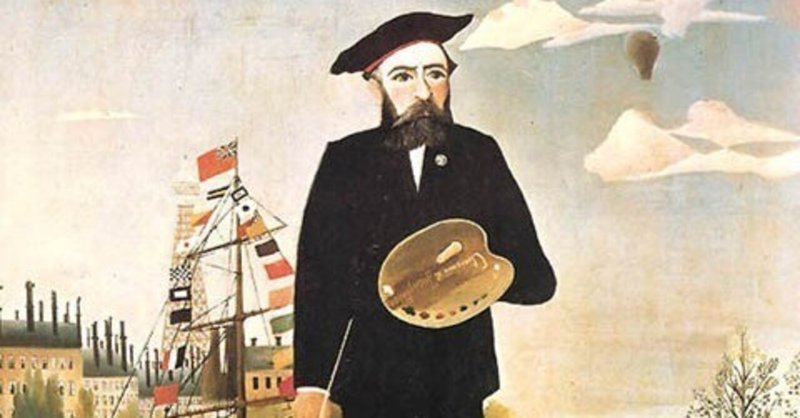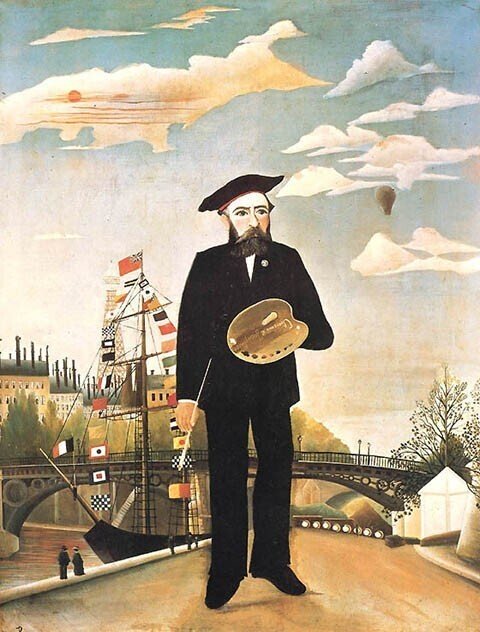
#3. Is the information factual? Your interpretation?

In contrast to the detailed background and open sky, the artist is depicted in all black in the center. This is an expression of the artist's anxiety about his future as a painter."
How would you feel if you read this commentary on Henri Rousseau's "Self-Portrait in Landscape" (Figure)? If you agree with this comment, you are mixing facts and interpretations to perceive visual information.
In fact, "uncertainty about my future as a painter" is my proper interpretation.
Always ready to go back to the facts, considering multiple possibilities.
There is a variety of information handled in the medical field, including referral letters, questionnaires, observations, physical findings, and test results. However, these are all a mixture of gems and cannot be used for medical treatment as they are. We need to examine them in our minds and prepare them according to our needs. The first step in this process is to distinguish between facts and interpretations.
Let us look again at the picture in the figure. In the center are a man with a rich mustache holding a palette in his left hand and a paintbrush in his right. The title is "Self-Portrait in Landscape," but is this the artist? From the height of his nose, he appears to be a Westerner. Some clouds and a balloon-like object are floating in the sky. Behind the figure to the left are ships, bridges, and buildings with various national flags fluttering behind them. The long, narrow thing extending from the structure is a chimney? The number of vents is quite large for an ordinary house. Could it be a factory? --There is a lot of information that we cannot pick up. Still, by distinguishing between the facts and our interpretations, we can get into the habit of consciously considering multiple possibilities. Even when you find yourself at a deadlock in your thinking, it is easier to start over if you go back to the facts.
There are no "100% unshakable facts" in medical practice.
In medical practice, distinguishing between "facts" and "interpretations" is the foundation for solving problems logically and critically. For example, suppose a patient tells you that they have lost weight due to stress at work. At first glance, the statement sounds like a fact, but the causal relationship between the cause (stress at work) and the result (weight loss) is merely the patient's interpretation. This interpretation into information that can be used in actual medical treatment, additional confirmation of the specific nature of the stress, the internal details of the dietary intake, how much weight was lost, and over what period is necessary. It may be required to search for organic diseases other than stress in some cases.
In addition, there are no "100% unshakable facts,"
It is essential to look for "shades of certainty. Once the distinction between facts and interpretations becomes a habit, it becomes possible to flexibly change the style and pace of medical treatment based on the "certainty" of the currently known peripheral information, medical history, medical examinations, and test results. This will allow us to treat patients dispassionately based on the facts, without interpretation.
Difficulties and Interests of Clinical Practice Full of Ambiguity
Conversely, if the collection of facts that form the basis for interpretation is insufficient, it will be challenging to correct the course. Only garbage comes out of the garbage can"-this is a line from the second season of the popular TV drama "Hanzawa Naoki. In medical practice as well, if the direction is misjudged due to insufficient information gathering through observation and dialogue at the problem list stage, no matter how advanced, up-to-date, and accurate the knowledge-based assessment and plan are afterward, it may result in additional time and cost, as well as invasiveness and risk to the patient. The quantity is too small, and the quality cannot be guaranteed.
In a field overflowing with ambiguous information, where quantity is scarce and quality cannot be guaranteed, we must somehow gather and interpret the facts to improve medical care as much as possible. This is the difficulty of clinical practice, but at the same time, I think it is a fascinating part. Even a picture that at first glance has nothing to do with medical treatment can, depending on how you look at it, be linked to brushing up on the process of interpreting and verbalizing the facts.
from
まだまだコンテンツも未熟ですが応援して頂けるとすっごい励みになります!
